Nokia 2012 Annual Report Download - page 66
Download and view the complete annual report
Please find page 66 of the 2012 Nokia annual report below. You can navigate through the pages in the report by either clicking on the pages listed below, or by using the keyword search tool below to find specific information within the annual report.-
 1
1 -
 2
2 -
 3
3 -
 4
4 -
 5
5 -
 6
6 -
 7
7 -
 8
8 -
 9
9 -
 10
10 -
 11
11 -
 12
12 -
 13
13 -
 14
14 -
 15
15 -
 16
16 -
 17
17 -
 18
18 -
 19
19 -
 20
20 -
 21
21 -
 22
22 -
 23
23 -
 24
24 -
 25
25 -
 26
26 -
 27
27 -
 28
28 -
 29
29 -
 30
30 -
 31
31 -
 32
32 -
 33
33 -
 34
34 -
 35
35 -
 36
36 -
 37
37 -
 38
38 -
 39
39 -
 40
40 -
 41
41 -
 42
42 -
 43
43 -
 44
44 -
 45
45 -
 46
46 -
 47
47 -
 48
48 -
 49
49 -
 50
50 -
 51
51 -
 52
52 -
 53
53 -
 54
54 -
 55
55 -
 56
56 -
 57
57 -
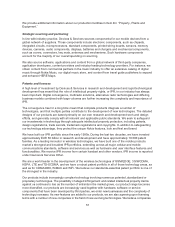 58
58 -
 59
59 -
 60
60 -
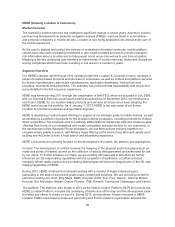 61
61 -
 62
62 -
 63
63 -
 64
64 -
 65
65 -
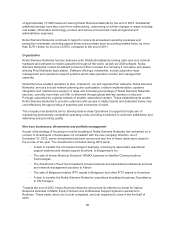 66
66 -
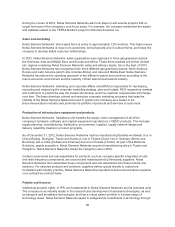 67
67 -
 68
68 -
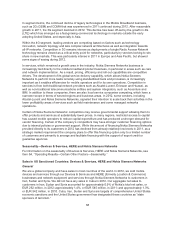 69
69 -
 70
70 -
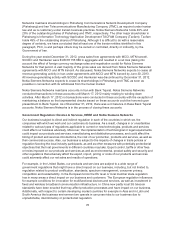 71
71 -
 72
72 -
 73
73 -
 74
74 -
 75
75 -
 76
76 -
 77
77 -
 78
78 -
 79
79 -
 80
80 -
 81
81 -
 82
82 -
 83
83 -
 84
84 -
 85
85 -
 86
86 -
 87
87 -
 88
88 -
 89
89 -
 90
90 -
 91
91 -
 92
92 -
 93
93 -
 94
94 -
 95
95 -
 96
96 -
 97
97 -
 98
98 -
 99
99 -
 100
100 -
 101
101 -
 102
102 -
 103
103 -
 104
104 -
 105
105 -
 106
106 -
 107
107 -
 108
108 -
 109
109 -
 110
110 -
 111
111 -
 112
112 -
 113
113 -
 114
114 -
 115
115 -
 116
116 -
 117
117 -
 118
118 -
 119
119 -
 120
120 -
 121
121 -
 122
122 -
 123
123 -
 124
124 -
 125
125 -
 126
126 -
 127
127 -
 128
128 -
 129
129 -
 130
130 -
 131
131 -
 132
132 -
 133
133 -
 134
134 -
 135
135 -
 136
136 -
 137
137 -
 138
138 -
 139
139 -
 140
140 -
 141
141 -
 142
142 -
 143
143 -
 144
144 -
 145
145 -
 146
146 -
 147
147 -
 148
148 -
 149
149 -
 150
150 -
 151
151 -
 152
152 -
 153
153 -
 154
154 -
 155
155 -
 156
156 -
 157
157 -
 158
158 -
 159
159 -
 160
160 -
 161
161 -
 162
162 -
 163
163 -
 164
164 -
 165
165 -
 166
166 -
 167
167 -
 168
168 -
 169
169 -
 170
170 -
 171
171 -
 172
172 -
 173
173 -
 174
174 -
 175
175 -
 176
176 -
 177
177 -
 178
178 -
 179
179 -
 180
180 -
 181
181 -
 182
182 -
 183
183 -
 184
184 -
 185
185 -
 186
186 -
 187
187 -
 188
188 -
 189
189 -
 190
190 -
 191
191 -
 192
192 -
 193
193 -
 194
194 -
 195
195 -
 196
196 -
 197
197 -
 198
198 -
 199
199 -
 200
200 -
 201
201 -
 202
202 -
 203
203 -
 204
204 -
 205
205 -
 206
206 -
 207
207 -
 208
208 -
 209
209 -
 210
210 -
 211
211 -
 212
212 -
 213
213 -
 214
214 -
 215
215 -
 216
216 -
 217
217 -
 218
218 -
 219
219 -
 220
220 -
 221
221 -
 222
222 -
 223
223 -
 224
224 -
 225
225 -
 226
226 -
 227
227 -
 228
228 -
 229
229 -
 230
230 -
 231
231 -
 232
232 -
 233
233 -
 234
234 -
 235
235 -
 236
236 -
 237
237 -
 238
238 -
 239
239 -
 240
240 -
 241
241 -
 242
242 -
 243
243 -
 244
244 -
 245
245 -
 246
246 -
 247
247 -
 248
248 -
 249
249 -
 250
250 -
 251
251 -
 252
252 -
 253
253 -
 254
254 -
 255
255 -
 256
256 -
 257
257 -
 258
258 -
 259
259 -
 260
260 -
 261
261 -
 262
262 -
 263
263 -
 264
264 -
 265
265 -
 266
266 -
 267
267 -
 268
268 -
 269
269 -
 270
270 -
 271
271 -
 272
272 -
 273
273 -
 274
274 -
 275
275 -
 276
276 -
 277
277 -
 278
278 -
 279
279 -
 280
280 -
 281
281 -
 282
282 -
 283
283 -
 284
284
 |
 |
of approximately 15 300 headcount leaving Nokia Siemens Networks by the end of 2012. Substantial
additional savings have also come from restructuring, outsourcing or similar changes in areas including
real estate, information technology, product and service procurement costs and general and
administrative expenses.
Nokia Siemens Networks continues to target to reduce its annualized operating expenses and
production overheads, excluding special items and purchase price accounting related items, by more
than EUR 1 billion by the end of 2013, compared to the end of 2011.
Organization
Nokia Siemens Networks has two business units. Mobile Broadband provides radio and core network
hardware and software to mobile operators throughout the world, as well as CEM software. Nokia
Siemens Networks’ mobile broadband product portfolio includes the company’s innovative and award-
winning Flexi Multiradio base station. Software offerings, meanwhile, include subscriber data
management and operations support systems which help operators monitor and manage their
networks.
Global Services enables operators to plan, implement, run and upgrade their networks. Nokia Siemens
Networks’ services include network planning and optimization, network implementation, systems
integration and maintenance support. A large and increasing percentage of Nokia Siemens Networks’
services, currently more than one fifth, is delivered through global delivery centers in India and
Portugal, supported by a global network of smaller, specialized centers. These establishments enable
Nokia Siemens Networks to provide customers with access to highly trained and dedicated teams very
cost-effectively through pooling of expertise and economies of scale.
The company has stated its aim to develop best-in-class Operations to support the triple aim of
maintaining permanently competitive operating costs, providing excellence in customer satisfaction and
defending and promoting quality.
Non-core businesses, divestments and portfolio management
As part of its strategy of focusing on mobile broadband, Nokia Siemens Networks has embarked on a
number of divestments of businesses not consistent with the new company direction. As of
December 31, 2012, seven divestments had been announced and five of these deals were closed in
the course of the year. The divestments concluded during 2012 were:
• A deal to transfer the microwave transport business, including its associated operational
support systems and related support functions, to Dragonwave Inc.
• The sale of former Motorola Solutions’ WiMAX business to NewNet Communications
Technologies
• The divestment of fixed line broadband access business and associated professional services
and network management solutions to Adtran
• The sale of Belgacom-related IPTV assets to Belgacom and other IPTV assets to Accenture
• A deal to transfer the Nokia Siemens Networks’ proprietary broadband business, Expedience,
to CN Tetragen
Towards the end of 2012, Nokia Siemens Networks announced its intention to divest its Optical
Networks business to Marlin Equity Partners and its Business Support Systems operations to
Redknee. These deals, which are not yet completed, are both expected to close in the first half of
2013.
65
